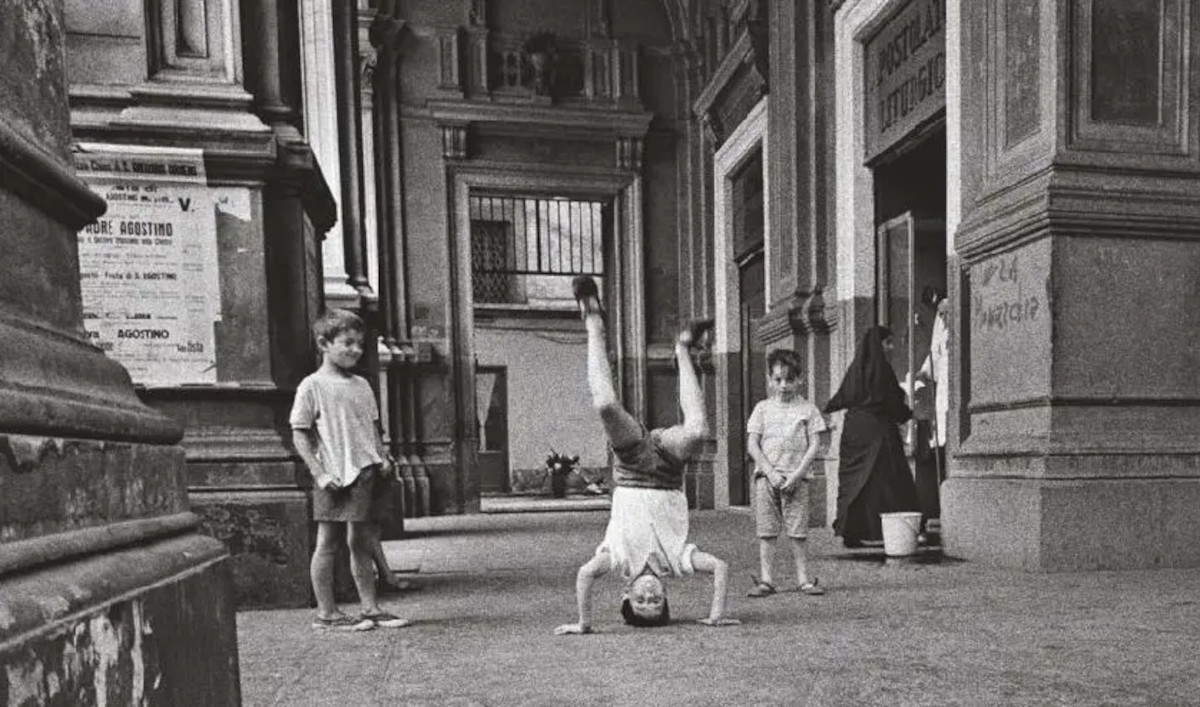In Udine the solo exhibition tracing the entire career of Gianni Berengo Gardin, with more than 190 shots
After MAXXI Museo nazionale delle arti del XXI secolo in Rome and Villa Pignatelli in Naples, the exhibition Gianni Berengo Gardin. The eye as a craft has arrived in Udine, the only stop in northern Italy. The exhibition, set up in the Salone del Parlamento and the rooms of the Galleria d’Arte Antica of the Udine Castle, is open to the public until September 15, 2024; it is curated by Margherita Guccione and Alessandra Mauro, promoted by the Municipality of Udine, and organized by MAXXI - Museo nazionale delle arti del XXI secolo in collaboration with Contrasto and the Civici Musei di Udine.
On display are 192 shots by Gianni Berengo Gardin, who was born in Santa Margherita Ligure 94 years ago: an integral collection of original vintage prints from his personal archive and the Roman museum. The aim of the exhibition is to rediscover and reread the Ligurian photographer’s long career through a new perspective.
Berengo Gardin’s photography is characterized by a deeply rooted sincerity and authenticity. Avoiding any manipulation, whether analog or digital, his works serve as historical documents that actively participate in the reality they describe. His natural compositions always place humans at the center of a dynamic and lived social space. Over the decades, Berengo Gardin has created a visual legacy unparalleled in the history of Italian and international photography. His method, which he likes to call “artisanal,” has become his hallmark. He has always proudly called himself “a photographer-photographer,” emphasizing his identity as an artisan of fine art photography rather than that of photographer-artist.
A master of black and white, he has always been an advocate and defender of the authentic photographic print, of images that capture everyday life. He is also an author of reportage and social investigative photography. In a career spanning nearly seven decades, Berengo Gardin has chronicled Italy from the postwar period to the present through his shots.
The exhibition is conceived as a chronological, topological and thematic journey through Italy as seen and photographed by the artist. It traces the photographer’s 70-year career, focusing on the cities that have had a significant impact on his private and professional life.
The visual journey begins with Venice, the city where Berengo Gardin first approached photography. Although he was not born there, he feels deeply connected to Venice. Here, influenced by photographic circles such as La Gondola, he trained as a photographer. His early images from the 1950s depict an intimate and tranquil Venice, while his most recent project in 2013 focuses on the Great Ships. From the allure of Venice, the exhibition moves to Milan, the city of industry, labor struggles and intellectuals. The exhibition includes portraits of figures such as Ettore Sottsass, Gio Ponti, Ugo Mulas, and Dario Fo. The exhibition continues through almost every Italian region, from Sicily to the rice fields of Piedmont, observing social and cultural evolutions. Friuli Venezia Giulia occupies a significant space in the exhibition: present, among others, are shots at the Monfalcone Shipyards. A particularly poignant section of the exhibition is dedicated to psychiatric hospitals, with images taken from the 1968 volume Morire di classe (Dying in Class), created together with Carla Cerati. These photographs, documenting conditions in Italian psychiatric institutions before the 1978 Basaglia law, are a powerful act of denunciation and respect, capturing the stark reality of those environments.
The exhibition not only celebrates Berengo Gardin’s career, but also offers a penetrating view of Italy’s transformations through the keen eye of a master photographer.
For all info: https://www.civicimuseiudine.it/it
 |
| In Udine the solo exhibition tracing the entire career of Gianni Berengo Gardin, with more than 190 shots |
Warning: the translation into English of the original Italian article was created using automatic tools. We undertake to review all articles, but we do not guarantee the total absence of inaccuracies in the translation due to the program. You can find the original by clicking on the ITA button. If you find any mistake,please contact us.





























